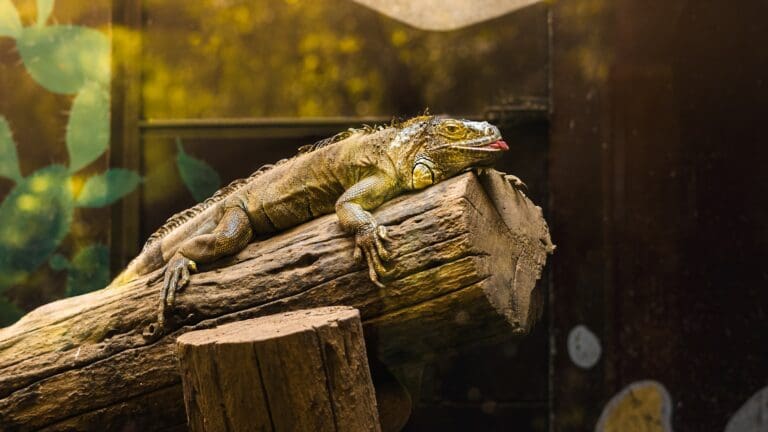Your bearded dragon stopped basking, your ball python rejected three meals in a row, or your turtle kept trying to escape its terrarium. These behaviors are reptile stress signs that need immediate action. Unlike whining dogs and hissing cats, stressed reptiles send signals through subtle postures and behavior changes that many owners ignore until health problems show up.
Physical Signs That Your Reptile Is Stressed
Lizards display stress through several irrefutable physical signs. Bearded dragons leave stress marks, dark stripes on the belly, when under environmental stress. Leopard geckos lose their tails when most traumatized, and iguanas darken the entire body in response to stress.
Snakes also have many clear indicators. Stressed-out ball pythons refuse to eat for weeks, experience stuck sheds, or hide for too long. Corn snakes exhibit abnormal movement patterns, always seeking a refuge to retreat to, or becoming excessively aggressive when handled. Respiratory issues such as mouth breathing or wheezing typically precede repeated stress in snake species.
Tortoises and turtles show stress through shell behaviors. They withdraw completely into shells for extended periods, frantically scratch against enclosure surfaces, or form soft patches in the shell from malnourishment caused by reduced appetite due to stress.
Physical reptile stress signs you should know:
• Change in color or loss of color pattern intensity
• Reduced appetite lasting longer than two weeks
• Abnormal shedding or stuck shed patches
Read More: Exotic Pets on the Rise: What’s Fueling the Demand for Unusual Animal Companions?
Changes in Behavior That Signal Stressed Reptiles
Other than physical signals, changes in behavior provide the initial indication of reptile distress. Bearded dragons bask for many hours daily, but stressed individuals avoid their heat sources completely or glass surf continuously against enclosure walls. Blue-tongued skinks are aggressive and will not be handled if they have been tolerant in the past.
Snake behavioral changes involve increased hiding, erratic feeding patterns, or unprovoked aggressiveness during regular maintenance. Stressed ball pythons ball more excessively than normal and remain defensive in familiar environments. Corn snakes can refuse to venture out for weeks and disrupt their natural activity patterns.
Shaune, an experienced leopard gecko owner, shares that proper care is key to reducing stress. He advises maintaining a hot spot temperature of 85-90°F with a cooler area for thermoregulation, providing a humid hide during shedding, and gentle handling to avoid tail drops. Following these guidelines helps geckos stay healthy, eat well, and behave naturally, reducing stress effectively.
Read More: The 10 Best Snakes for New Reptile Owners
Environmental Adaptations to Reduce Reptile Stress
Stress in reptiles is largely the consequence of suboptimal environmental conditions, rather than handling or socialization. Temperature gradients must precisely fulfill species requirements—bearded dragons need 95-105°F basking spots with 75-80°F cool areas. Even 5-degree changes will induce stress response in timid species.
Recognizing reptile stress signs early prevents serious health problems and improves the quality of your pet’s life. Monitor your lizard, snake, or turtle daily for changes in behavior, provide proper environmental parameters, and get reptile-smart vets if stress signs don’t improve. Remember, stressed reptiles hide problems; proactive checking keeps your scaly pal well and cheerful.
Read More: 10 Exotic Pets You Didn’t Know Were Legal






